Seeking Out Australian Native Orchids #15 - Identification
Not every time that I follow rule 3 (Revisit Tracks) do I find orchids. Or do I? Is this an orchid?
I went back to visit two of the tracks on two days last week - one of those was the eventful November 8. Some days are just not days for finding orchids and this was one of those. I revisited the sites on one track where there are orchids in bud - no flowers yet. Patience needed.
I did get to meet this fellow who was on the side of the path and quite relaxed about me being there. The Eastern Water Dragon goes bright red along the ribcage when he is agitated. I know. I came very close to stepping on one this week. He was too quick for the photographer.
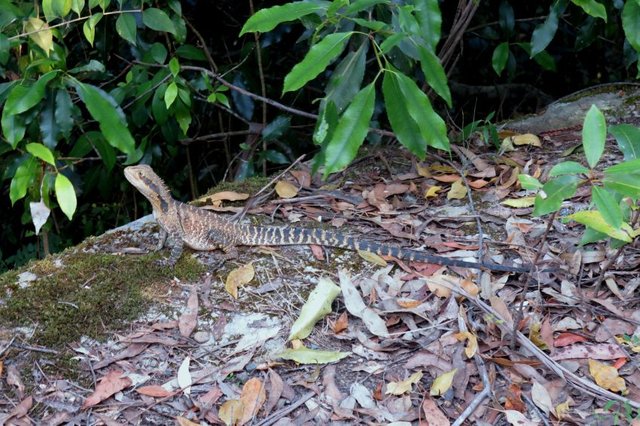
On my other walk, I was revisiting a track that a friend had seen Duck Orchids in flower (following Rule 2). The bonus arrived early here as this fellow was walking across the bridge that provides access to the track. By the time your slow photographer parked the bicycle and got the camera out he was up this tree.
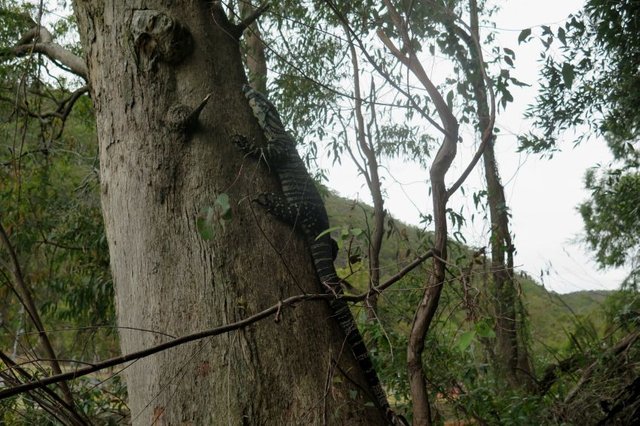
Here in Australia we call these Goannas. It is one of 25 species of Monitor Lizard found down under.
I did find a flash of colour on the ground that looked interesting. This is the best photograph I could get - flower was very small and down low on the ground.
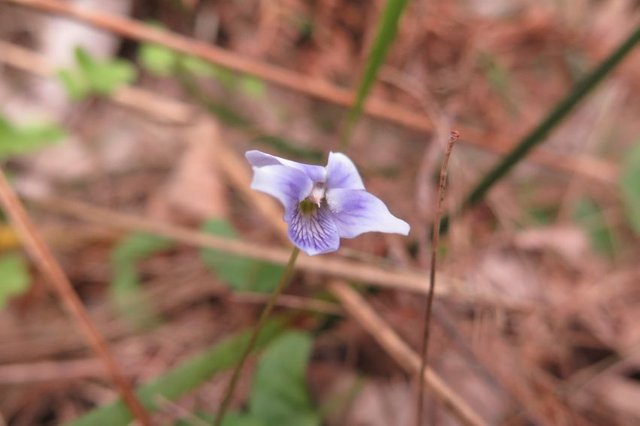
Now to identification. Flower is too small for me to identify on location. There was certainly a stem coming up from the ground. There were several leaves on the ground and I was having trouble telling if they were joined to each other or they were independent plants. The leaf shape is not like any orchid I have seen. I am leaning to some sort of runner type flower.
The structure of the flower then becomes the key. I have read quite a few guides on how to identify orchid flowers. They all confuse me - so here goes with a basic guide from first principles, which I have just worked out so I know what is what on an orchid flower. I will start with a picture I have shared before - Slender Sun Orchid (Thelymitra Pauciflora). I have chosen this orchid very specifically because it looks more like an ordinary flower than any other orchid.
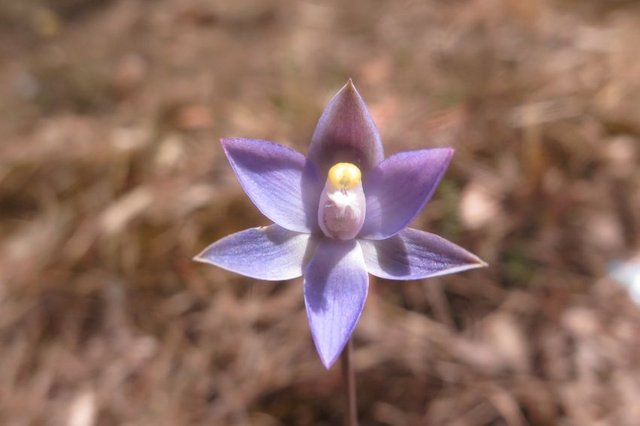
The first part of the flower are the Sepals. These are the remnants of the outside layer of the bud. As the flower opens, the sepals are pushed outwards. There are always three. All you have to visualise is this outer ring of the bud folding away from the flower itself. Here they are labelled S - Sepals
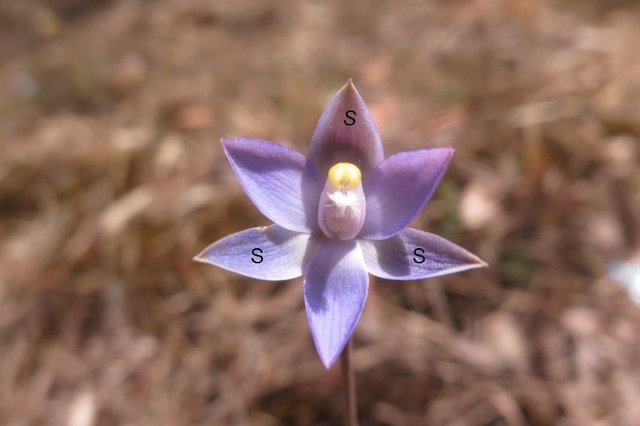
The inner circle of the flower are the Petals. There are also always 3. Here they are labelled P - Petals
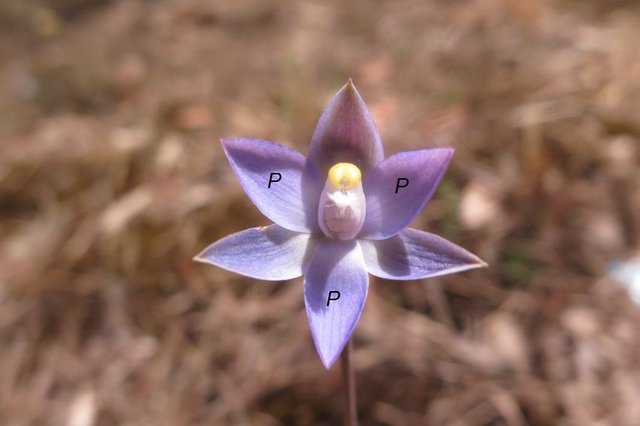
The last element of the flower is the pollination system. It is called the Column and is labelled C in the image. The Column is quite different to other flowers because it is a single element that contains both pollen sender and pollen receiver. Other flowers have these separated into two elements
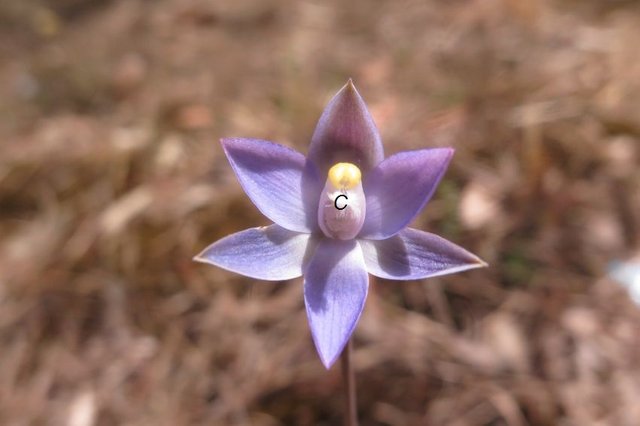
So the basic principles of identifying an orchid are 1. Count the elements and decide which are sepals and which are petals. If they add up to 6 it is likely to be an orchid. 2. Then look at the pollinating system - column or not.
Now this is where the descriptions get confusing. One of the petals is called by a different name because it performs more than one function in attracting insects. It is the Landing Petal - which I have labeled Landing Place. It is given the name Labellum - which is just a fancy word for Landing Place.
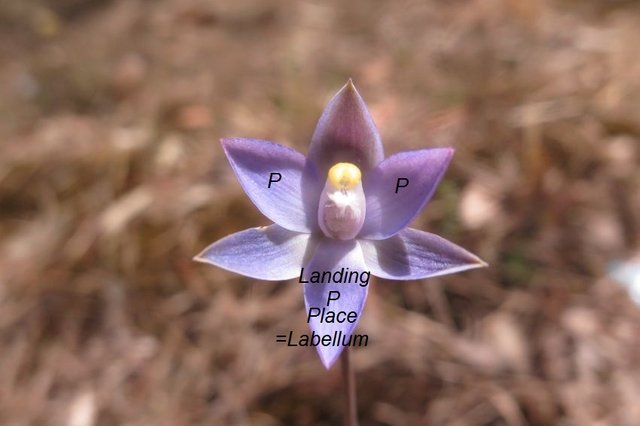
Where does that leave us on deciding if the pretty purple veined white flower is an orchid? There are 5 elements (and not 6) that all look like petals. That is enough to tell me it is a flower - not an orchid. What type? I do not know but I am going to guess some kind of pea flower
Note: Photographs taken on November 7 and 8, 2016.
What a nice way to explain an orchid versus other flowers! Very clear! That was such a simple orchid, too, that you used in your example. I think that helped, lol. Some of them are so complicated. I hope you see a lot more orchids soon!
And I liked the spikes on the back of that dragon's head and neck!
Thanks for the comments. I have read so many descriptions of orchids. My eyes glaze over. Sometimes one can only learn something when you are ready - this is the day I was ready.
That sounds like me with mushrooms - the details and language -- wow! Here's to the uniqueness of orchids!
Thank you for sharing Australia.
Thanks for sharing.